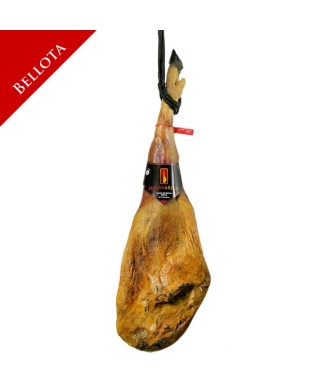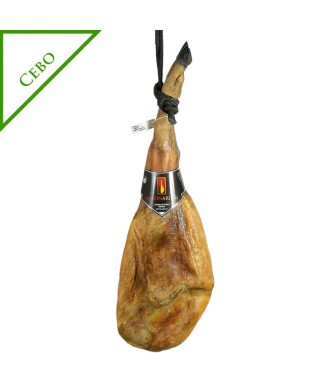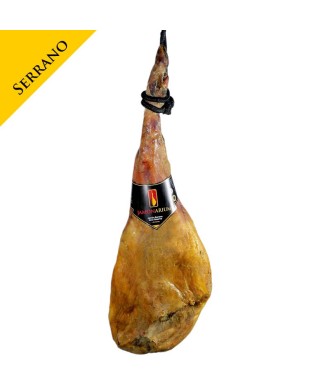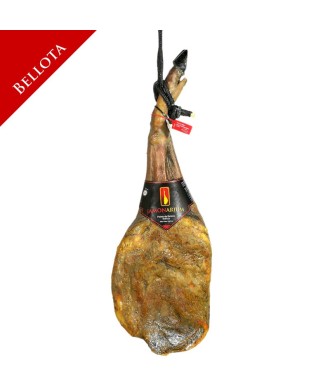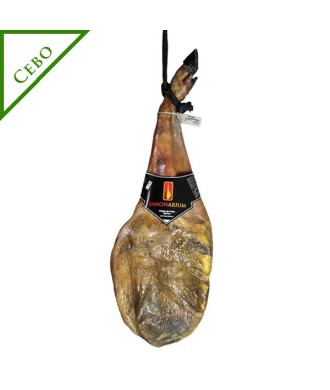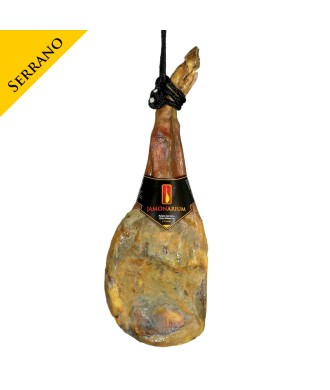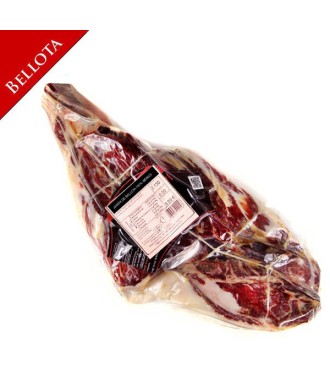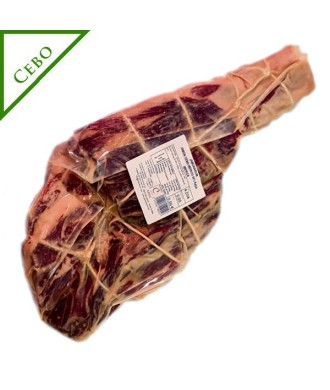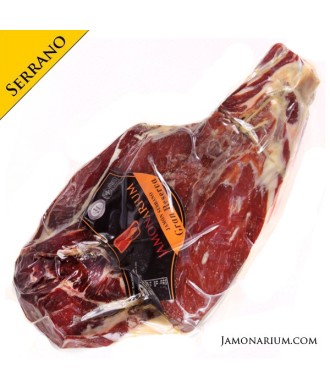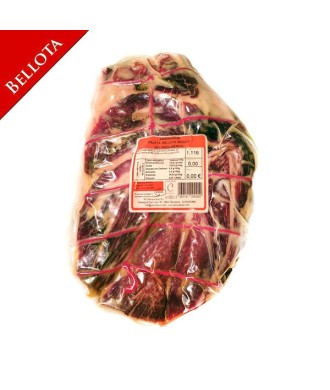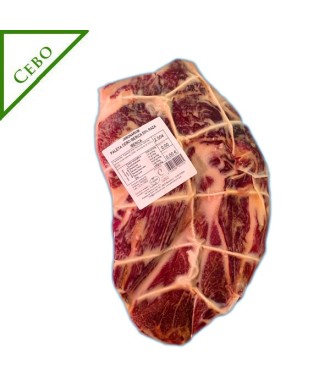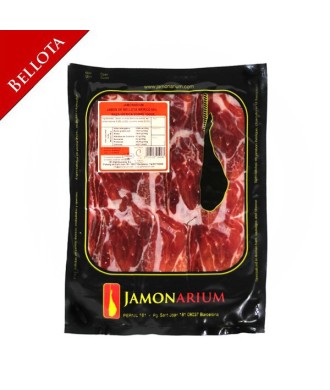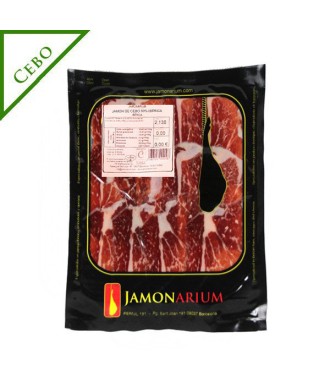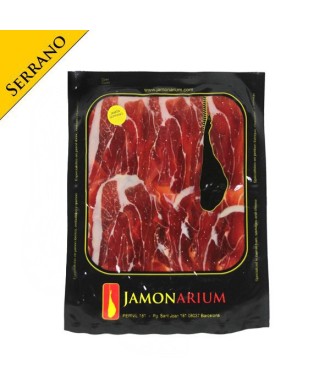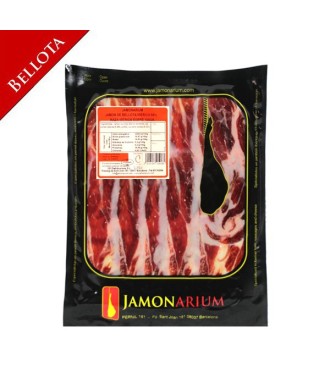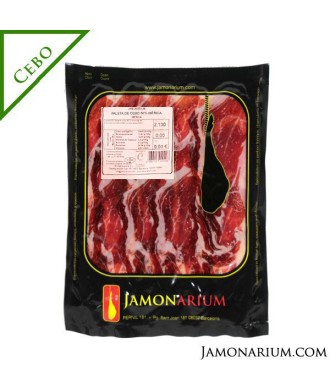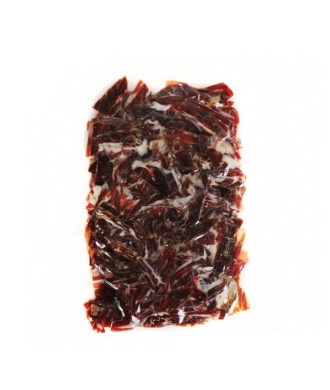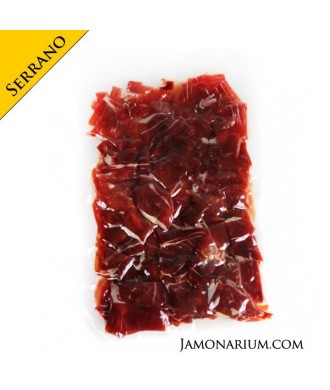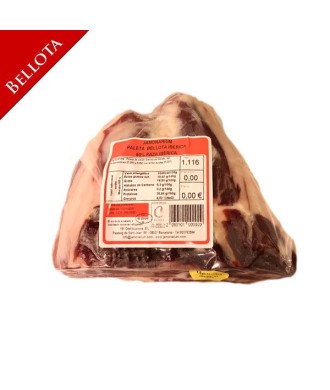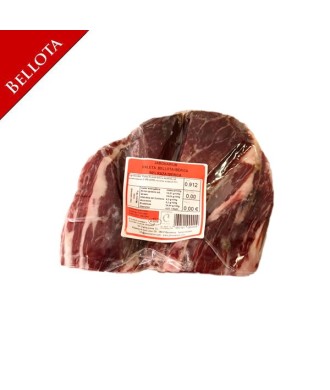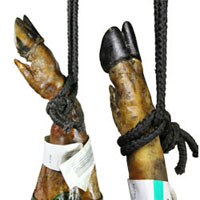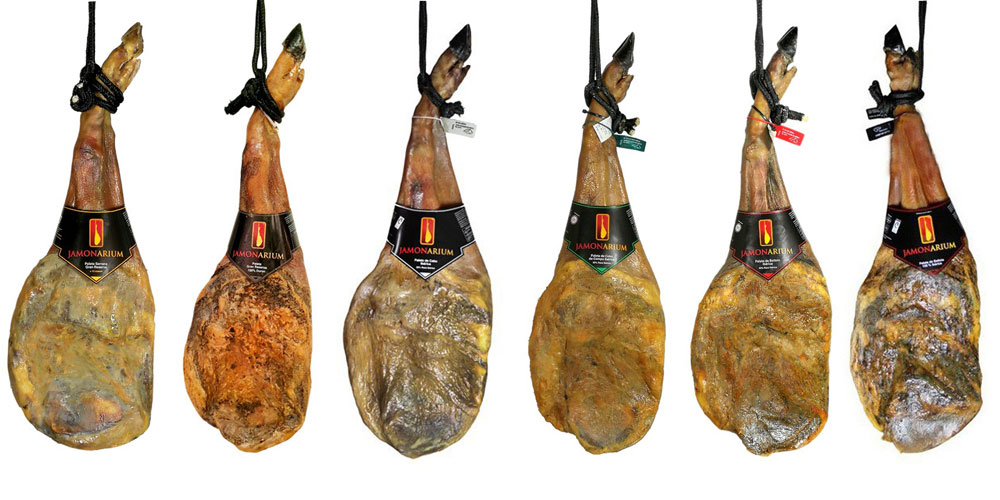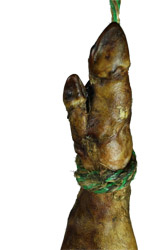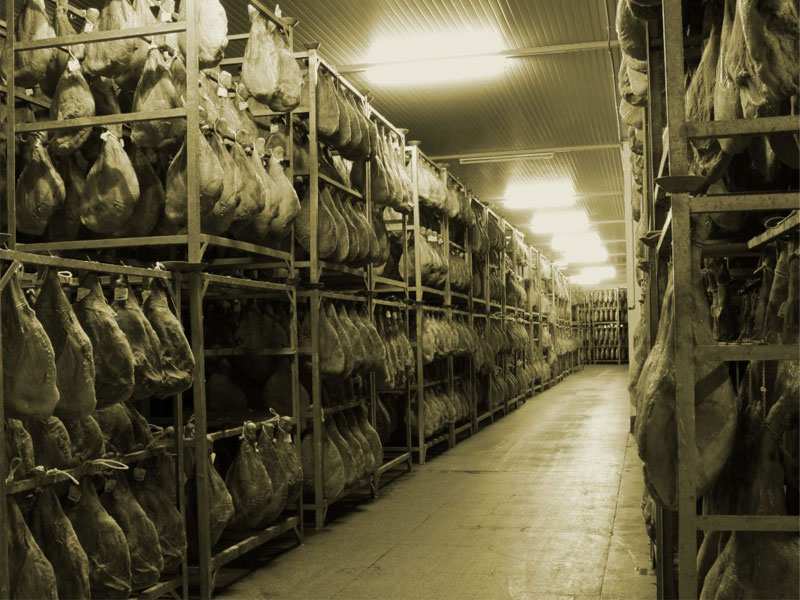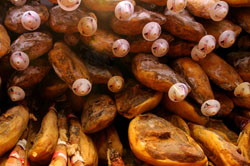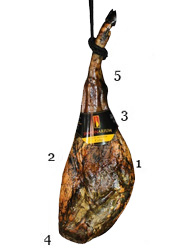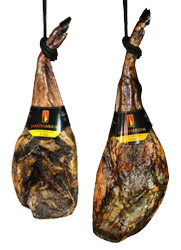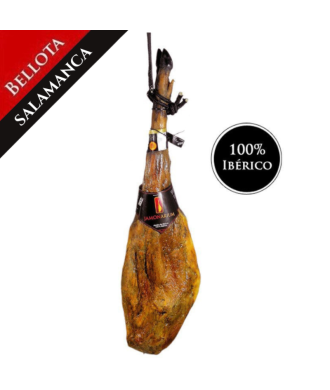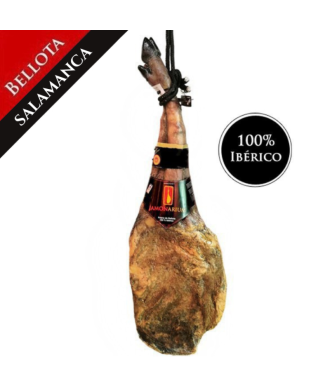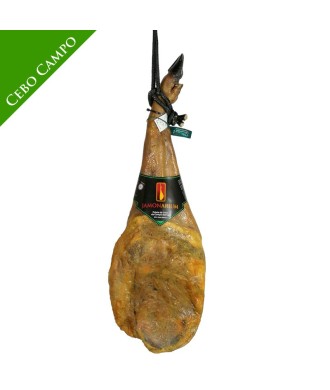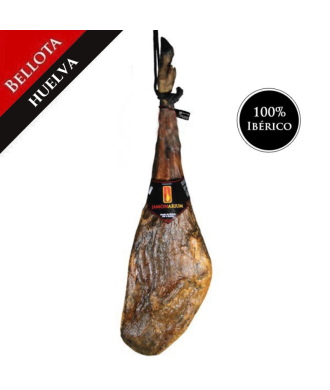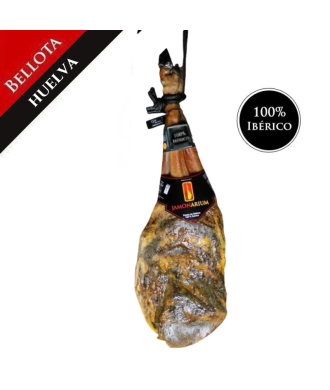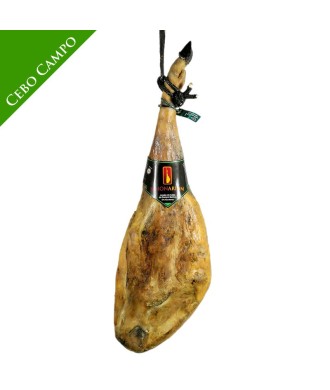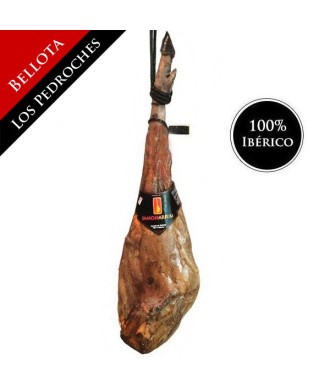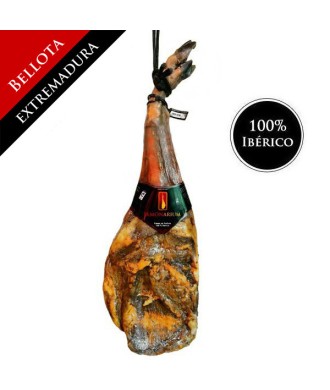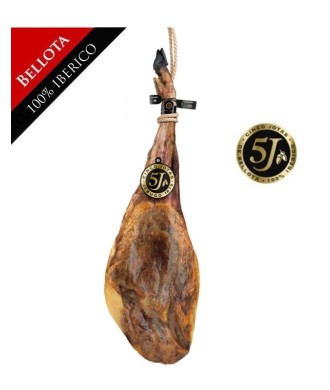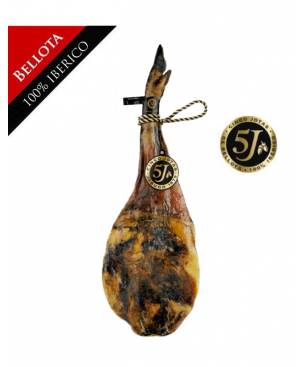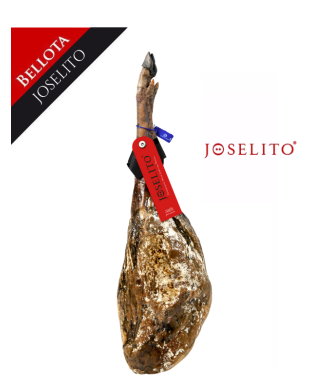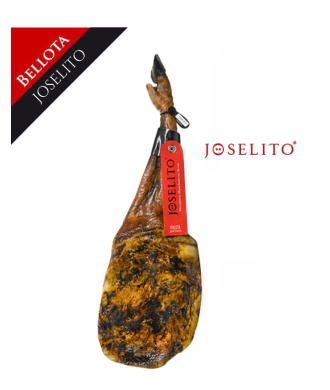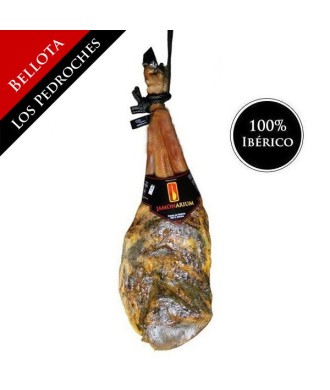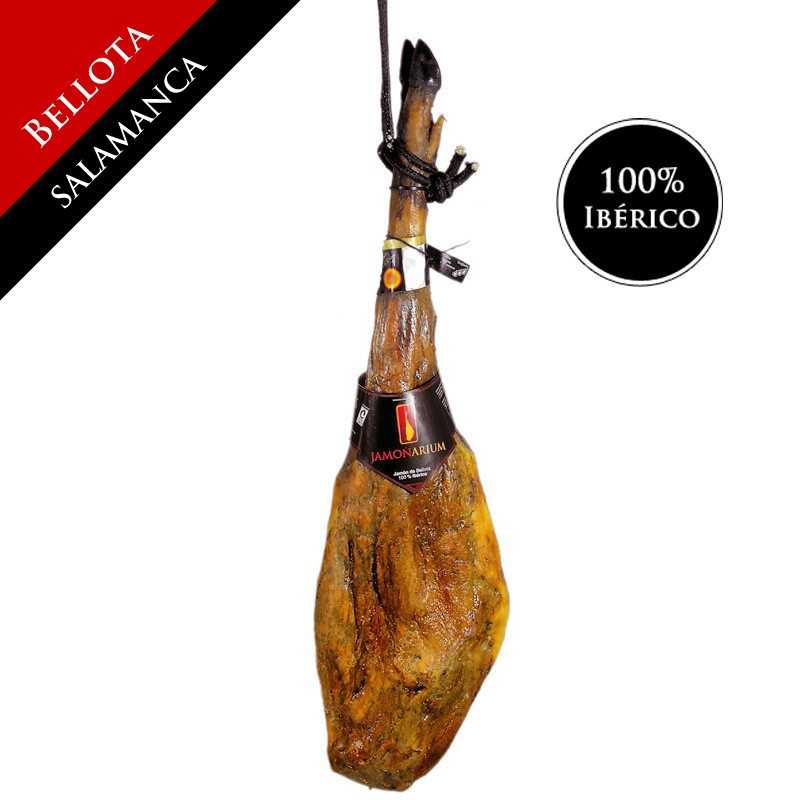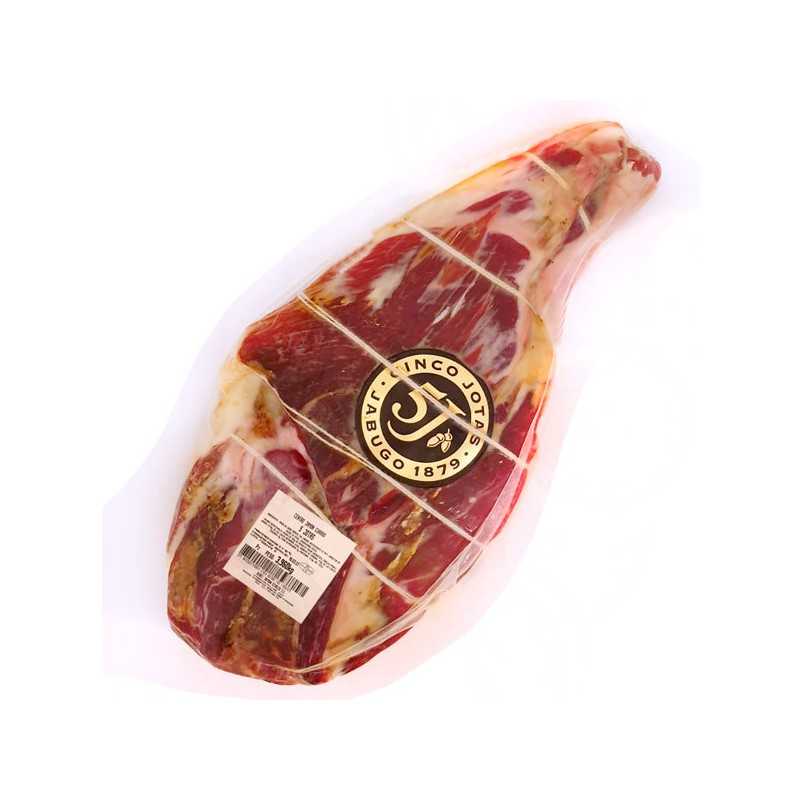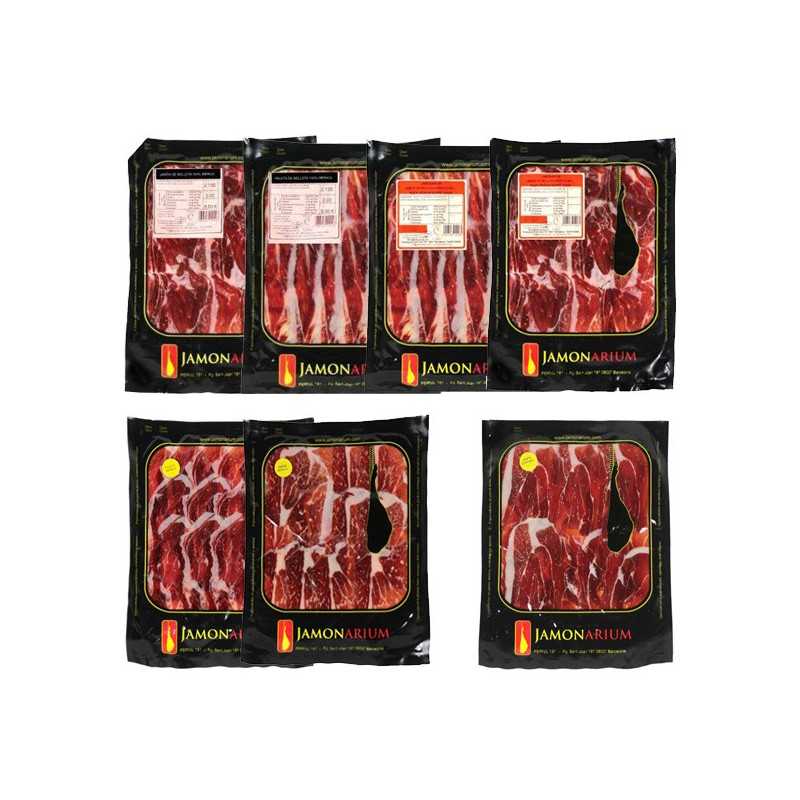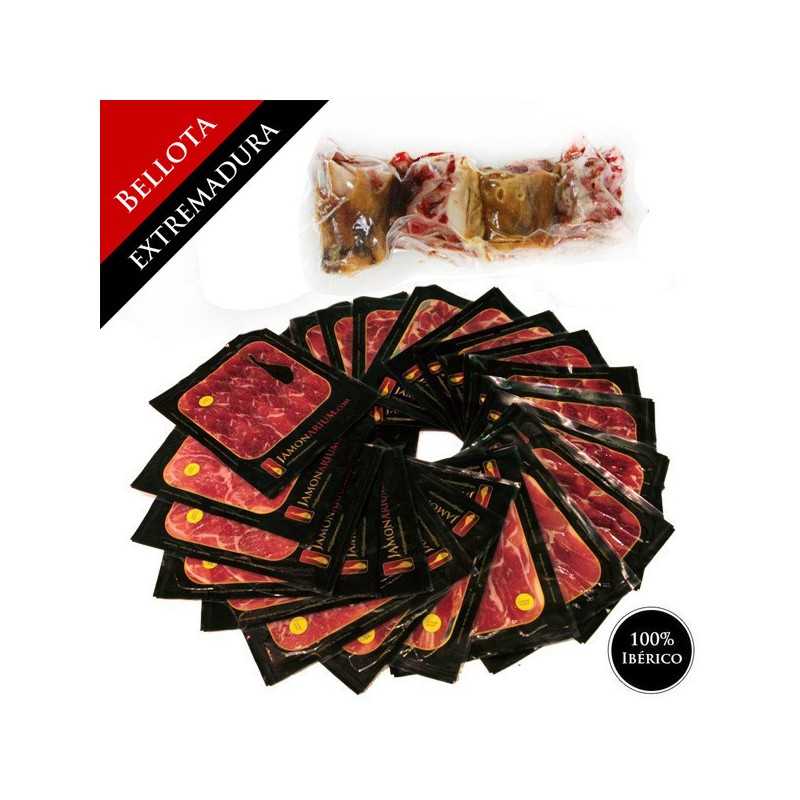About Spanish Ham: Bellota, Iberico, pata negra & Serrano
1. Types of Spanish ham
2. Spanish Ham production
3. Parts of the Spanish ham
4. What’s the difference between ham and shoulder?
5. Spanish Ibérico and serrano hams preservation and consumption
6. How to slice spanish iberico and serrano hams and shoulders
7. Spanish ham production areas
8. Ibérico Pata Negra spanish ham
9. How to choose the perfect spanish ham or shoulder?
10. Spanish ham and good health
11. Curiosities about spanish ham
Here's some information about the Spanish ham, types, origins and curiosities.
If you have any further question, please contact us and we will try to resolve your doubts or lack of information asap.
Our spanish hams
1. Types of Spanish ham
Iberian Spanish Ham (Jamon Iberico pata negra)
Origin: Race of pigs from the Iberian Peninsula based on pure registered Iberian pigs crossed with other Iberian males.
Appearance: Pointed and narrow snout animal with short black hair. Despite the volume of body mass, it has a stylized body and thin long paw.
The hoof: Usually black. This is the reason why it is known as "Pata Negra", which means black paw.
Colour, flavour and aroma:The colour of iberico ham goes from pink to purplish red. It has a slightly fibrous texture and fat infiltrations. The combination of the delicate flavour and intense aroma of this delicious food, makes it an attractive, indispensable product in every good gourmet table.
The fat: The iberian pigs genetics provides them with a natural fat infiltration in their muscle tissue. This provides the oily texture and intense flavour of the Iberian ham. This fat is bright, smooth and extremely soft to the touch.
The official classification of Iberian hams follows two criteria according to the new certification of products made since 2014.
The breed of the pig
- Iberian 50%: Iberian hams have a 50% Iberian pig breed. This means that only one of the parents, usually the female, is 100% Iberian breed.
- Iberian 100%: Hams iberian 100%, or also known as "pata negra" came from hams 100% Iberian breed. This means that both parents must be 100% Iberian breed.
Feeding tipe of iberian pigs
If we follow the classification according to the kind of feed, we will obtain 3 categories:
- Bellota: This type of Spanish ham comes from pigs which have been fed with acorns and pasture until they reach 50 kilos weight. This is the highest quality ham. Depending on the percentage of Iberian breed, the color of its label is black (for those 100%) or red (for those 50%).
- Cebo de Campo: This type of Spanish ham comes from pigs which has been feed with both pasture and feeding stuffs. Those are raised in big places so that the pork is able to move and thus obtaining better quality hams. The color of its label is dark green, regardless of the purity breed's pig.
- Cebo: This type of Spanish hams comes from pigs that have exclusively been fed with feed stuffs. The colour of its label is white, despite the purity of the Iberian breed as it happens with "Cebo de Campo" hams.
Serrano Spanish Ham (Jamon Serrano)
Below, we are showing the main characteristics of serrano hams:
Origin: There are written references about the Serrano ham in Hispania, late 2nd century BC, by the Romans.
Appearance: Also called white pig, because is usually white skin and clear hoof.
The hoof: Usually clear brown.
Colour, aroma and texture: The colour varies from pink to purple tones: mild flavour, slightly salty and pleasant aroma. It is also homogeneous and slightly fibrous texture. Compared to the Iberian, aroma, flavour and texture are slightly softer.
The fat: It's bright, yellowish white in colour, aromatic and pleasant taste.
The official classification of the Serrano ham depends on the dry curing and maturation. There are 3 types of Serrano ham :
- Serrano Bodega: Curing time from 10 to 12 months.
- Serrano Reserva: Curing time from 12 to 15 months.
- Serrano Gran Reserva: More than 15 months of curing time.
In Jamonarium we only work with the best products of each type of ham, with long curying times to guarantee as much as possible quality and flavor.
2. Spanish Ham production
The Extremadura pastures - La Dehesa
The Dehesa is the area of pastures and oak forest where Iberian pigs are raised traditionally in Extremadura, Spain.
Extremadura is a region of great ecological value and mostly uninhabited. Its Mediterranean climate with hot dry summers and long mild winters makes it ideal for raising the Iberian pig.
In Extremadura there are about a million hectares of pastures and another million hectares of forest. This combination forms an ecological paradise.
Some oak acorns are sweeter than others, so the Iberian pigs look for them like children look for candies. They can eat about 7 kg per day.
The search for acorns provides the Iberian pigs two very important things. First, the infiltration of the fat in the muscular tissue, due to exercise derived from the search of acorns. Secondly, the coming benefits of a healthy and an abundant natural diet.
The large area devoted to each animal provides a great nutrition and an optimal development of the Iberian pig. So we can get the best Iberian ham.
To get the most out of the oak trees, there is the “vareado” (a person hitting the tree with a long stick) used to bring down the acorns so that the pigs can enjoy them freshly when fallen from the tree.
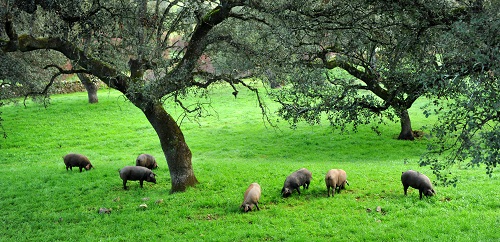
Traditional dry curing process of spanish ham
The spanish ham production process is slow and laborious. It can last between 15 months and 3 years. The process consists of 5 stages:
- Reception of raw product.
In this stage there are extreme quality controls to ensure that the meat arrives in proper sanitary conditions, rejecting any non-compliant product. The analysis is taken place to define the type of Iberian ham that it’s going to become after the whole process.
- Salting and washing
Salting is one of the oldest forms of preserving meat in natural conditions, without artificial preservatives. Today this natural preserving form is still used to get the best Spanish ham.
Hams are buried in salt between layers of salt.
- Resting time
In this stage the hams are left in cold storage approximately 90 days. Certain conditions of temperature and humidity are need so that the salt is equally distributed through all pieces, in order to promote dehydration and conservation.
The temperature and the humidity are gradually raised and later on they are reduced slowly.
When temperature and humidity conditions inside the resting chambers are consistent with those in the natural drying ones, the hams are moved to the maturation stage.
- Drying and maturation
In this stage hams are settle in natural cellars (bodegas) where they are dried in the traditional way.
Hams rest hanging for months (depending of the type) to acquire the texture, the maturation, the taste and aroma appropriate for the curing process. This process distributes the fat between the muscle fibbers which allows it to retain its best aroma.
- The “Bodega” stage
Hams are hung in natural cellars for a period of time which depend on the type of piece you want to obtain. During this period they will lose between 30% and 40% of their initial weight.
The Ham Master (Maestro Jamonero) role is extremely important in this process because he controls the time of the different stages, depending on the characteristics of each group of hams.
3. Parts of the Spanish ham
The different parts of the spanish ham provide different degrees of curation and different types of slices.
- [1] La Maza: The largest part of the ham and tastiest one. If you put the piece facing the hoof, the part we see in front of us is “la maza”.
- [2] La Babilla o Contramaza: The part behind the “maza”. It is narrower and dryer because it’s covered with less fat. We recommend you start cutting the ham from here, so that we can avoid it dries too much while you eat the “maza”.
- [3] El Codillo: Located between the “caña” and the “maza”. It is the more fibrous part of the whole piece.
- [4] La Punta: Totally opposed to the hoof. It is very tasty and has a good level of fat.
- [5] La Caña: The closest part to the hoof. Being also very fibrous is usually cut in small cubs for “tapas”. This form provides different flavour and texture of the slices.
4. What’s the difference between ham and ham shoulder?
Being the ham the back leg and the shoulder ham the front leg of the pig, we present a list of differences between them.
Specific features of the ham, the back leg:
- Approximate weight: between 7 and 8.5 kg
- The proportion of bone and fat is approximately 50% of the total weight.
- Longer curing time than the ham shoulder: from 15 to 36 months.
- Higher price.
- Their anatomy allows easier cutting and bigger slices.
Specific features of the shoulder ham, the front leg:
- Approximate weight between 4 and 5.5 kg
- The proportion of bone and fat is approximately 60% of the total weight.
- Shorter curing time: 12 to 24 months depending on the quality.
- Cheaper than the ham for the same quality.
- The anatomical shape of the bones makes its cutting a little more complicated than the back leg ham.
Our spanish hams
5. Spanish hams preservation and consumption
Spanish hams have very specific consumption and preservation guidelines. Depending on how long the ham lasts to be consumed and depending on the ham is started or not, preserving and consumption guidelines may vary.
To know more about preservation and consumption of serrano and ibérico hams here.
6. How to slice spanish ham
To slice iberico and serrano spanish hams and shoulder may seem and art. By following some guidelines, slicing hams and shoulders will become much easier. To select the appropiate equipment and following instructions to do it, this job will be much easier.
To know more about how to slice iberico and serrano hams and shoulders here.
7. Spanish ham production areas
In Spain we may find different production areas of spanish hams, maily placed in Southern and South Western in our country. Production areas are mainly placed in this area due to the weather and sort of pastures, perfect for the curying process. Production areas happen to meet with the 4 Designations of Origin, which are the following: Designation of Origin Guijuelo (Salamanca), Designation of Origin Jabugo (Huelva), Designation of Origin Dehesa de Extremadura and Designation of Origin Los Pedroches.
Hams of Designation of Origin Jabugo (Huelva)
Traditionally, Huelva hams used to be named as "Jabugo Ham" as one of the main ham production areas in Spain. Undoubtedly, this is one of star products concerning 100% iberico hams in Spain.
To know more about Designation of Origin Jabugo (Huelva) here.
Hams of Designation of Origin Guijuelo (Salamanca)
Designation of Origin Guijuelo hams, the first D.O. created in Spain, come from Salamanca, more precisely from Guijuelo. Iberico Guijuelo hams are some of the better valued hams.
To know more about Designation of Origin Guijuelo (Salamanca) here .
Hams of Designation of Origin Dehesa de Extremadura
Designation of Origin Dehesa de Extremadura come from Extremadura autonomous community, which includes Caceres and Badajoz. Iberico hams protected by Designation of Origin Dehesa de Extremadura have a very long history though the Designation of Origin has been officially recognized in 1990.
To know more about Designation of Origin Dehesa de Extremadura here.
Hams Designation of Origin Los Pedroches (Córdoba)
Designation of Origin Los Pedroches is placed in Córdoba and it is the youngest ibérico ham Designation of Origin in our country, but with a long cattle-raising tradition. This Designation of Origin has been officially created in 2010.
8. Pata Negra spanish ham
The term "pata negra" is related to spanish ham due to the hoof colour of pure iberian pigs, which is black. Mistakenly, every ham used to be named "pata negra" without taking into account neither breed neither feeding. However, ibérico pata negra hams refers to 100% iberian breed hams.
To know more about ibérico pata negra hams here.
9. How to choose the perfect spanish ham?
Choosing a spanish ham or shoulder which fits on someone's needs is not an easy job. Ham or shoulder, serrano or ibérico; cebo, cebo de campo or bellota. With Designation of Origin or Gran Reserva. Depending on the needs and the amound of fellow diners to enjoy it, the needs at the time to choose may vary.
To know more about how to choose the perfect ham or shoulder here.
10. Spanish ham and good health
Iberian spanish ham has countless health benefits substantiated by studies from prestigious universities.
This product of Spanish cuisine has more protein than fresh pork, 50% more, in 100g of iberian ham there are 33% of the proteins we need for our day. It is for these that this product is of great interest for high-protein diets.
The Bellota ham is also very rich in calcium and phosphorus, and also contains vitamins B1, B2 and iron.

The good fat of the Bellota Pata negra spanish ham
Acorns fed pigs have a higher proportion of unsaturated fats that lower cholesterol and counteract the effects of cardiovascular disease, improving the circulatory system.
The best iberian spanish ham is rich in monounsaturated fatty acids like oleic acid is well suited for most recent dietary recommendations considered a healthy fat.
The cholesterol content in the ham is very low, (30-40 mg/100 g), which is even lower than the rate of lean meats like chicken or turkey, very low in cholesterol.
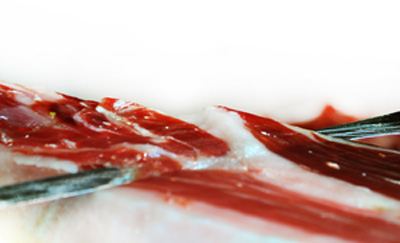
11. Curiosities about spanish ham
La Cala - How to select a good spanish ham?
To select the ham or a shoulder ham in its optimum curing point is a not an easy task. You need an specialist with experience on this field. When we receive your order of a ham, we select your ham within its ideal curing point with the weight you demand. This important process is carried out using all our senses:
- The sense of touch allows us to know the curing process of the ham, touching all the different parts of it. The exterior fat provides us information about the quality and how it has been cured successfully.
- The sense of sight gives us information about the proportion of fat. The different colour in the ham explains about the curing process and some areas used to have wrinkles on the skin.
- The sense of smell comes with the “cala” process. This is a sharpened beef bone which is introduced near the ham’s bone to check its aroma. We get information about the curing process, the salt and the quality of the product.
- The sense of taste is not our job, that’s left to you when you enjoy such a delicious dish.

What are the white dots in the spanish ham?
Often when you buy a ham or shoulder ham you notice some white specks that appear when you cut it. Maybe you thought that there is something wrong with the ham...Nothing further from the truth.
These white specks on our ham are the result of crystallization of an amino acid called tyrosine. It is the result of natural curing process, being a sign of quality and excellence of the product.
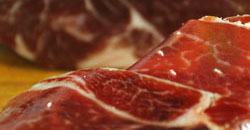
 4,8/5
4,8/5 




 4,8/5
4,8/5